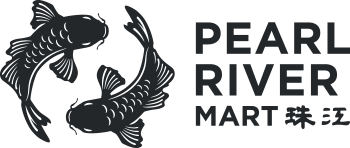
Happy Birthday to Peking Opera! 9 Fun Facts
We admit it: a night at the Peking opera may not be for everyone. That high-pitched singing, the seemingly cacophonous music, not to mention the language barrier.
But it's also about fabulous costumes, intricate makeup, and incredible tumbling and acrobatics, and an important part of Chinese culture and history. That’s why we’re bringing you nine fun facts about Peking opera on the day it was born.
It’s very different from Western-style opera

Chinese opera is quite different from Western style. While the latter focuses on powerful and emotional singing, fluid performance, and straightforward storytelling, the former might be considered more rigid and full of broad gestures and symbols, whether via musical cues, costumes, or elaborate makeup. In addition, it involves much more physical movement, from mime to dance to acrobatics.
It’s relatively young
While Chinese opera goes back thousands of years, Peking opera is much newer. Huiju, a variety of opera from the province of Anhui, was introduced to Beijing in 1790 when the Four Great Anhui Troupes performed for the Qianlong Emperor’s 80th birthday on Sept. 25. Hence, Peking opera was born.
The training is notoriously intense
Just ask Jackie Chan (yup, that Jackie Chan). The action megastar recalls sleeping just five hours a night, getting not enough to eat, and getting beaten for minor infractions like dropping rice on the floor. Physical training included 40-minute handstands, hour-long crouches, and thousands of kicks and punches. Singing and acting lessons were just as harsh.
Nowadays the training is far less severe but still rigorous, giving many students the skills to go on to become actors, singers, or martial artists, if not Peking opera performers.
It has four main roles
While Western opera has a wide variety of roles, Peking style has four main types.
Sheng. The main male role.He might be older and dignified (laosheng); younger with a high-pitched voice that occasionally breaks, Peter Brady style (xiaosheng); or a kind of action hero, complete with fighting and acrobatics (wusheng).
Dan. Any female role. Like the Sheng, the Dan might be old (laodan) or fight-y (wudan). She might also be young and fight-y (daomadan), virtuous and elite (qingyi), or single and hot-to-trot (huadan). She might also be elite and hot-to-trot (huashan), a role originated by Mei Lanfang, an opera star from the early 20th century.
Jing. A male role with a painted face, this forceful character might be asked to sing a lot (tongchui), sing less and engage in more physical performance (jiazi), or focus on acrobatics and fighting (wujing).
Chou. A male clown. This secondary role might be a civilian character (wen chou) or a military man (wu chou). While considered minor, the wu chou role is actually one of the most demanding: the performer must be expert at not just acrobatics and singing but comic timing as well.
For 140 years, women were banned from performing
Not-so-fun fact: the Qianlong Emperor banned all female performers in Beijing beginning in 1772. However, by the 1870s women began thwarting the ban and appearing on stage, even impersonating male roles. More and more women performed, so much so that all-female opera troupes were formed. The ban was finally lifted in 1912.
Some of the most famous (and infamous) opera stars were female impersonators

Mei Lanfang, a male performer who played women
Perhaps as a result of the ban, there’s a long tradition in Peking opera of men playing female roles, similar to practices in ancient Greek and medieval theater. One of the biggest stars of the early 20th century was Mei Lanfang, depicted in "Forever Enthralled," a film by Chen Kaige, director of another Peking-opera-centered movie, "Farewell My Concubine."
Perhaps the most notorious female impersonating performer is Shi Pei Pu, the inspiration behind David Henry Hwang’s play, "M. Butterfly." Shi conducted a 20-year love affair with Bernard Boursicot, a French diplomat who claimed to believe Shi was a woman. During their affair, Shi became a spy, passing secrets from Boursicot to the Chinese government.
The music might sound like a mess — but it’s not
The accompanying music of Peking opera might sound like a random mix of strings and drums, but it’s actually quite structured.
Instruments. There are generally just four instruments in the small ensemble: the jing hu, a kind of stringed instrument; a ruan, a lute that’s plucked; and the da luo and xiao luo, large and small cymbals.
Styles. There are two, xīpí and èrhuáng. In xīpí, the melodies are high, loud, and disjointed and are used to tell happy stories. Erhuáng is lower and more melancholy, and used for lyrical tales.
Tempo. There are six ways you can turn the beat around in Peking opera. Manban is slow while yuanban is medium-fast. Kuai sanyan and daoban are both “leading” beats. Sanban is rubato, a slight speeding up and slowing down, while yaoban is “shaking.”
Melody. There are three broad categories:
- Aria. This solo might have different purposes depending on the music style. For instance, a xiaosheng might sing an aria called the wawa diao, literally “children’s tune,” to emphasize emotion.
- Qupai. These instrumental melodies might announce the arrival of an important person or the commencement of a banquet or feast.
- Percussion pattern. Like qupai, percussion patterns provide context. For example, as each character enters the stage, a different pattern might be played to show their status and personality.
The noisier the audience, the better

While silence might be expected at Western performances, noise is the way to go for audiences of Peking operas, whether it’s cracking seeds, slurping tea, or cheering and clapping enthusiastically throughout the performance.
Each mask color has a special meaning

The colors mask-like makeup of the performers are full of meaning.
Red. Considered good luck in Chinese culture, red is also a good omen in Peking opera. It symbolizes loyalty, devotion, courage, and uprightness.
Black. Makeup with an emphasis on black indicates a character who’s rough around the edges but also bold, selfless, and fair.
Yellow. This bright hue signifies someone who’s fierce and ambitious yet cool-headed at the same time.
Purple. See a purple face and you’ll see someone who’s honorable, sophisticated, and calm. Makeup that’s reddish purple suggests a character who’s just and noble.
Blue. Feeling blue in the face? If you’re in a Peking opera, you’re tough, reliable, and astute.
White. In Western culture the color white often embodies purity and innocence, but in Chinese culture, it’s a different story. A character with white-dominated makeup is thought to be sinister, treacherous, crafty, and even a powerful villain.
Green. A verdant visage implies someone who’s impulsive, violent, stubborn, and an all around loose cannon.
Silver and gold. These luminous shades often specify supernatural beings, such as gods, ghosts, and demons.
Feeling inspired? Check out our papier mache Peking opera masks, mini mask sculptures, or opera mask bottle opener. You can also learn more about Asian culture.
[Images via Flickr, CC BY 2.0: "Beijing Opera," Tom Thai; "Chinese opera, Beijing," Brian Snelson; "Pumpkin Seed," Saad Akhtar; "Peking Opera Masks," timquijano]
